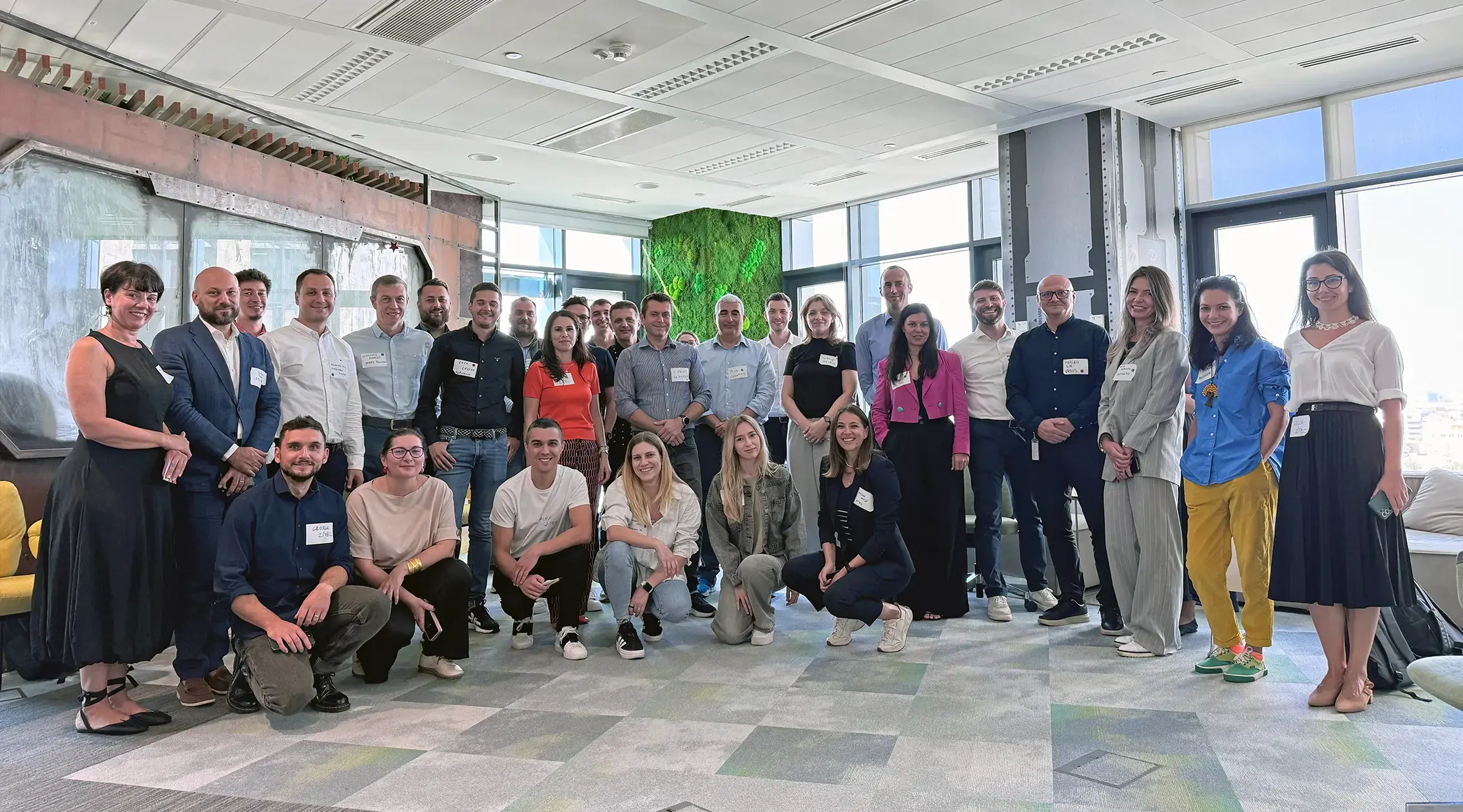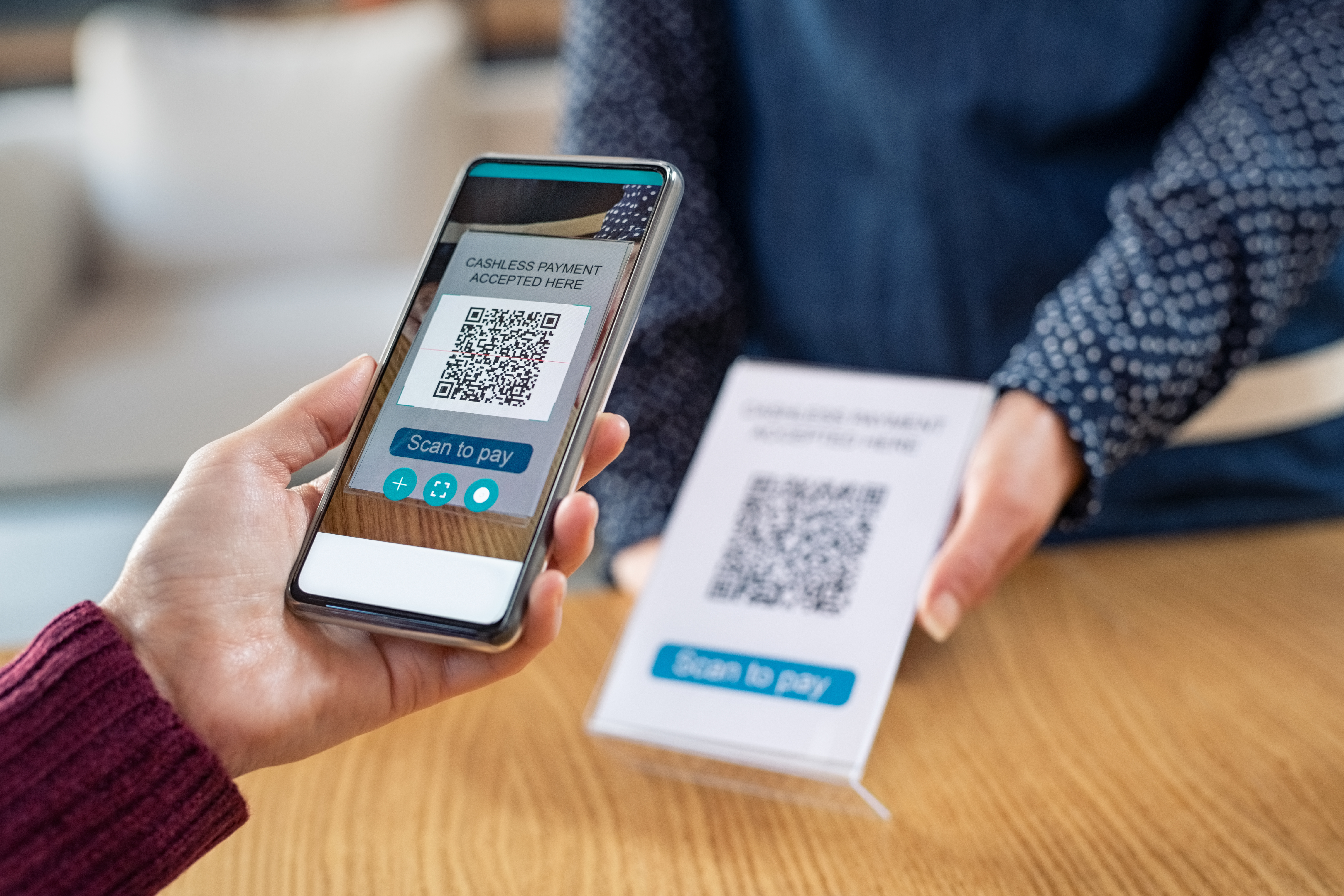Retail digital transformation involves fundamentally reshaping traditional retail business models and workflows by adopting digital technologies such as AI, data analytics, cloud computing, and automation. The goal is to enhance customer experiences, improve operational efficiency, and adopt data-driven decision-making.
Digital transformation in the retail industry began with the rise of mobile commerce, the demand for omnichannel experiences, and an increased focus on data-driven personalization. With retailers vying for new customer bases that demanded better shopping journeys, the pressure to innovate grew even more.
The problem? Most retail business leaders report challenges in delivering digital products on time and within budget to support business transformation initiatives. Hence, today we’re shedding light on:
- The current landscape of retail and why digital transformation is more than a trend
- Key challenges faced on the way and the shifts in consumer behavior
- Practical steps to kickstart your digital transformation strategy
Understanding the Need for Digital Transformation in Retail

Unlike traditional corporate changes led by board-level strategies, retail digital transformation is driven primarily from the bottom up, directly influenced by consumer demands.
Consumers now expect personalization at every touchpoint — from product recommendations to tailored promotions. They’re not waiting for retailers to catch up but moving towards brands that already offer seamless, digitally integrated experiences.
So, what’s there to do? Let’s look at the market. A Zitec study shows that over 45% of retailers believe omnichannel, mobile, and e-commerce evolution will create the most value for their organization.
On the flip side, retailers that delay digital transformation risk losing their competitive edge. Brands that fail to meet these expectations will likely struggle with customer retention and face operational inefficiencies, making it nearly impossible to keep up with faster, more agile competitors.
What Drives Retail Digital Transformation?
Key drivers driving the future of retail toward digitalization:
The demand for personalized experiences
Modern consumers expect personalized interactions and tailored recommendations based on their preferences and behavior. Personalization in retail means delivering the right message, product, or offer to the right customer at the right time (AKA when the consumer is ready to receive each type of communication and nudge).
Here are the key areas of focus to consider in retail hyper-personalization:
- Data analytics (past buyer behavior, first-party data, etc.)
- AI-driven algorithms (that can be fed vast amounts of data to aid in decision-making)
- Customer segmentation (based on buying frequency, preferences, demographics, etc.)
As consumers demand more individualized experiences, retailers will invest in AI-powered digital solutions to meet these expectations (including Gen AI and ML technologies). Such products include:
- Custom loyalty apps
- Smarter chatbots that can remember buying behaviors and past inquiries
- Dynamic promotions involving cross-selling recommendations all the way to the checkout process
…and so much more.
The mobile commerce boom
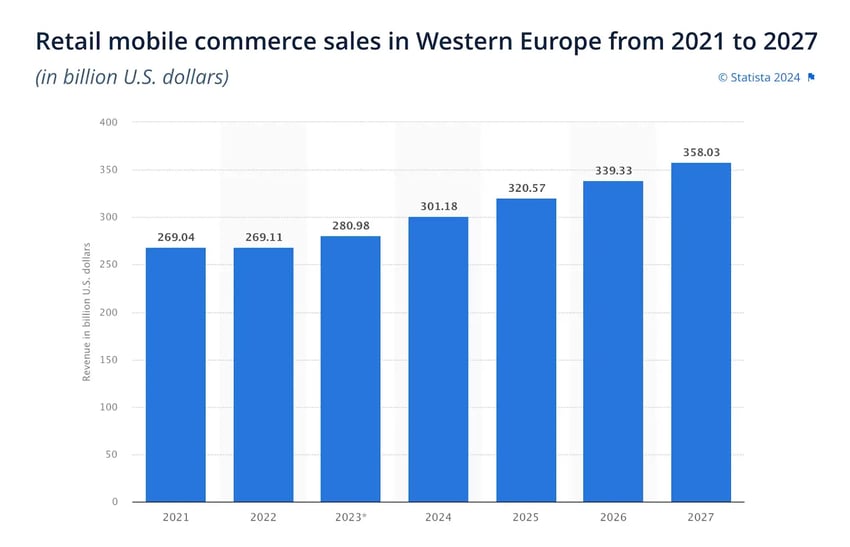
The rapid adoption of smartphones and mobile devices has forever changed how consumers shop. With mobile commerce (mCommerce) on the rise, consumers now expect the convenience of:
- Browsing
- Comparing
- Purchasing products
All directly from their smart devices, through mobile apps or their chosen browser. This shift has led leaders who prioritize retail digital transformation initiatives to focus on mobile apps, mobile-optimized websites, and payment systems to capture this growing market segment.
This trend drives the retail sector to invest in mobile-friendly platforms and mobile apps to boost the user experience and capitalize on this market shift.
The growing interest in data-driven decision-making
Through digital touchpoints, retailers now have access to vast amounts of customer data, insights into their operations, and market trends.
This data is a valuable asset that can drive more informed decision-making in retail operations such as:
- Optimizing inventory management
- Improving pricing strategies (e.g., using dynamic pricing)
- Creating more effective marketing strategies (targeting based on more than just demographics)
- Improving customer service across all touchpoints, including offline, online, and customer service channels
For instance, retailers like Ikea use big data analytics to manage their supply chain more efficiently and predict product demand. By analyzing sales data, customer behavior, and market trends, they can adjust their inventory live, reducing costs and minimizing stockouts or overstock situations.
The Shift from Brick-and-Mortar to Omnichannel
The rise of omnichannel retail comes as customers demand frictionless, personalized experiences across both online and physical channels at all times. Brands in the retail sector that facilitate the seamless transition between channels will be the long-term winners of this retail shift.
However, since the online shopping experience is not always linear, customers may start their journey online, browse products, visit a physical store to test them, and then return online to complete the purchase.
Therefore, an effective omnichannel strategy blends these touchpoints into a unified experience to maximize the chances of conversion and boost customer satisfaction and retention.
|
A key example of omnichannel integration done well is Leroy Merlin Romania, which partnered with Sameday and Zitec to launch a first-of-its-kind national delivery service that includes over 3,900 easybox lockers. These lockers represent nearby pick-up points for customers who want to shop and receive their products at the most convenient time for them, such as during their daily commute or near their homes.
With more than 25,000 products available for pick-up from these lockers, Leroy Merlin made sure customers had flexible and convenient delivery options nationwide, which helped them increase sales and consumer satisfaction.
|
Challenges of adopting digital transformation in the retail industry
The path to modernization is filled with both technical and strategic barriers. To better understand what those might be and learn more about the future of retail, we commissioned a study of over 150 C-level industry leaders alongside WBResearch. Below, we’ll explore some of our main findings, starting with the top challenges in the field.
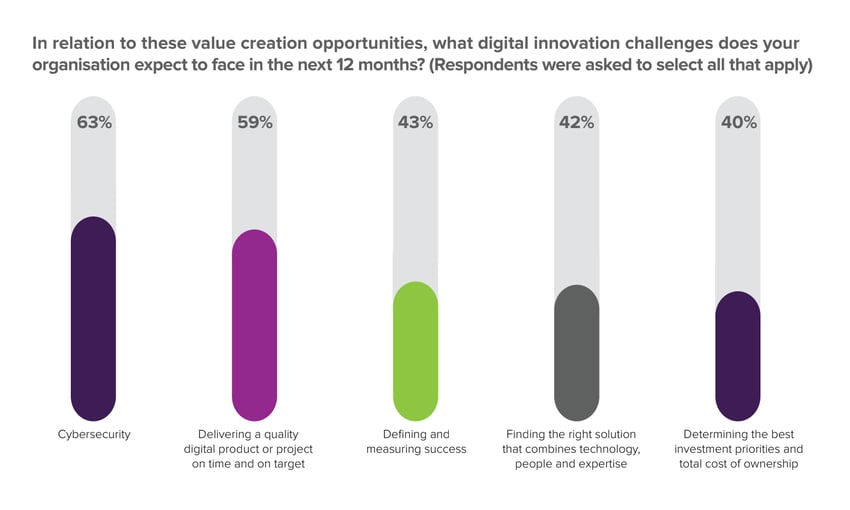
Integration with legacy systems
In the retail industry, we often see companies relying on outdated technology infrastructures that weren’t built with modern digital tools in mind and lack scalability. Integrating new systems with these legacy platforms is costly and time-consuming. The key is prioritizing systems that offer flexible integration and minimizing disruptions to ongoing operations.
High implementation costs
The initial investment in retail digital transformation can be prohibitive, especially for smaller retailers. These costs involve purchasing new technology, retraining staff, and redesigning processes. While the same research shows that retail giants allocate as much as 20% of their IT budgets to custom software development, small and medium businesses struggle to justify the cost, particularly when short-term returns aren’t immediately visible.
Data management and cybersecurity concerns
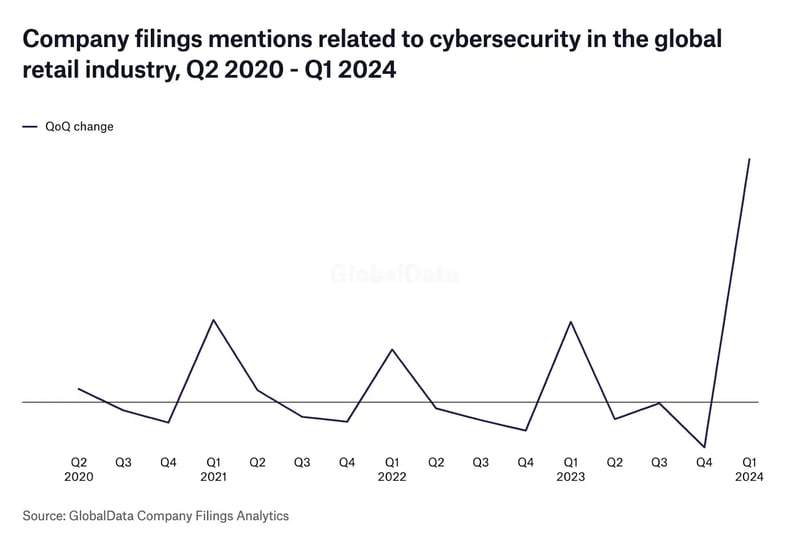
With more consumers shopping online, retailers collect vast amounts of big data — much of it sensitive. Handling this data properly and guaranteeing compliance with regulations like GDPR is a concern. And since our research also shows that 63% of retail leaders see cybersecurity as a main hurdle in their digital transformation initiatives, it’s clear that this challenge adds a layer of complexity to the transformation process.
Customer experience consistency
Providing a unified, seamless customer experience across all channels is easier said than done. Retailers must ensure that customers receive the same level of service, whether they’re shopping online or in-store. This requires:
- A) Knowing your customer well. Do you have a holistic overview of who is your main demographic? What information are they interested in finding on your website? What age groups (senior users vs younger customers) you're targeting? How often do they hear from you?
- B) A seamless user journey. This is where digital tools seamlessly interact with physical locations to create a holistic customer experience. A misstep here can lead to fragmented services and customer frustration.
Omnichannel integration
.jpg?width=1200&height=800&name=unnamed%20(1).jpg)
Retailers face the challenge of developing and maintaining a seamless omnichannel strategy. This requires coordination across marketing, IT, and operations departments to make sure that digital and physical systems are fully aligned. For this approach to work, companies must obtain:
- A complete and accurate overview of their client persona through a client profile that centralizes data from all touchpoints and a data management system that interprets user data and provides overviews, recommendations, and action suggestions in real-time with the help of AI.
- An ERP that unifies product information, so that shopping experiences don't end up in unnecessary frustrations due to out-of-stock, available at a different location, or only available in-store situations.
Poor coordination can lead to disjointed customer journeys, missed opportunities, and operational inefficiencies.
Supply chain complexity
Digital innovation demands more agile and responsive supply chains. Yet, managing supply chains in a globalized market presents its own set of difficulties. 39% of our surveyed retailers struggle with supply chain digitization due to complex logistics, unpredictable demand, and the high cost of digital optimization tools. This is an area where many retailers feel the pressure to evolve, but few have found an easy solution.
Keeping up with rapid technological changes
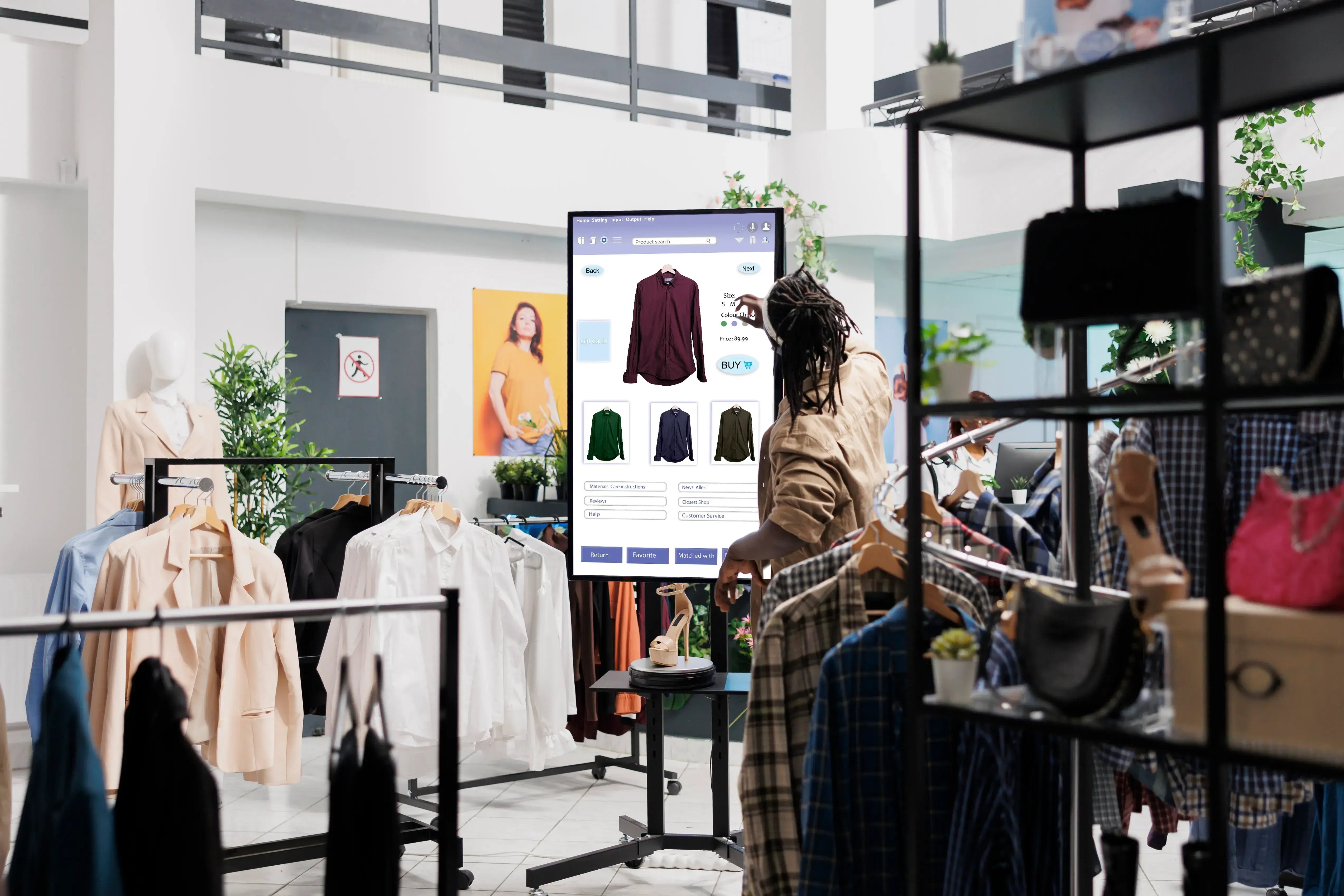
Technology is advancing fast, and retailers need to stay on top of the latest innovations. Failing to keep up with trends can leave a retail business vulnerable to competition that has adopted more efficient, customer-centric technologies. The challenge lies in continuously investing in digital capabilities without overwhelming the organization.
Talent and skill gaps
The retail sector faces a talent shortage, particularly in roles requiring digital expertise. Nearly 70% of the same retail CIOs report difficulties hiring staff with the right digital skills, including data analysis, IT management, and digital marketing. Without the right talent, digital transformation initiatives often stall or fail to achieve their potential.
Change management
Resistance to change is a common challenge, with legacy mindsets often hampering progress. As such, change management strategies must focus on effective training and communication to smooth the transition. However, as retailers struggle to foster a culture of adaptability where employees can embrace new ways of working, this might be easier said than done.
At Zitec, we understand that digital transformation is as much about people as it is about technology. For instance, during the development of Brico Dépôt's online shop, our team conducted extensive training sessions across their nationwide stores to prepare staff to adapt to the new operational workflows.
Measuring ROI and justifying investment
One of the most difficult aspects of digital transformation is demonstrating a clear return on investment (ROI). In fact, 43% of retailers struggle with measuring the success of their digital initiatives, and many find it challenging to align these retail digital transformation efforts with long-term financial goals.
. However, there are ways to measure impact and assess priorities in digital project investments, as discussed by our CTO, Lucian Daia, alongside Google Cloud in an exclusive retail-focused interview. Key insights include starting with a PoC to validate ideas and measure feasibility in a controlled environment, and how to do it right.
The 5-Step Process of Overcoming the Challenges of Digital Transformation in Retail
Just like with any new business endeavor, there’s no guarantee that your retail digital transformation investments will pay off. One example in this field is Amazon’s Just Walk Out Technology, which proved to lack adoption among consumers and employees due to an ineffective model.
Still, the technology itself is not the problem, as it’s already being sold to smaller businesses. The problem was the setting, as Just Walk Out works better in small stores, where customers are mission-driven, rather than in supermarkets, where Amazon initially rolled it. Project-wise, the issue lies in planning and building the right business scenarios rather than the tech itself.
Planning vs. venturing is essential. Validating ideas before rolling them out is also important to maximize outcomes. With a proven process like the one below, you’ll minimize risks like scope creep and position your retail business for long-term growth.
Step 1: Assess Business Objectives, Needs, and Organizational Readiness
Digital transformation in retail should align with your organizational core strategy and deliver meaningful value. Innovative digital projects, by their very nature, tend to break down silos and require a big-picture viewpoint.
Consider factors like human dynamics, the business context, and user readiness early in the process to prevent the project from evolving into an uncontrollable or misaligned venture.
Key areas to assess:
- Business objectives and long-term strategy. What are your company’s primary goals, both short-term and long-term? How can digital transformation support these objectives?
- Organizational readiness. Does your organization have the right structure, talent, and culture to embrace new technologies and work methods? Is your current staff ready to adapt to change?
- Technology stack and technical interdependencies. Review your existing technology stack and identify any technical dependencies that may need to be addressed. Innovative projects often involve complex layers of technology that need careful planning. See which areas of innovation require technical and talent outsourcing.
- Human dynamics and user readiness. Retail digital transformation is also about people. Are your stakeholders, including investors, board members, customers, and employees ready to engage with the digital experiences you introduce?
Step 2: Fail Fast, Start Small
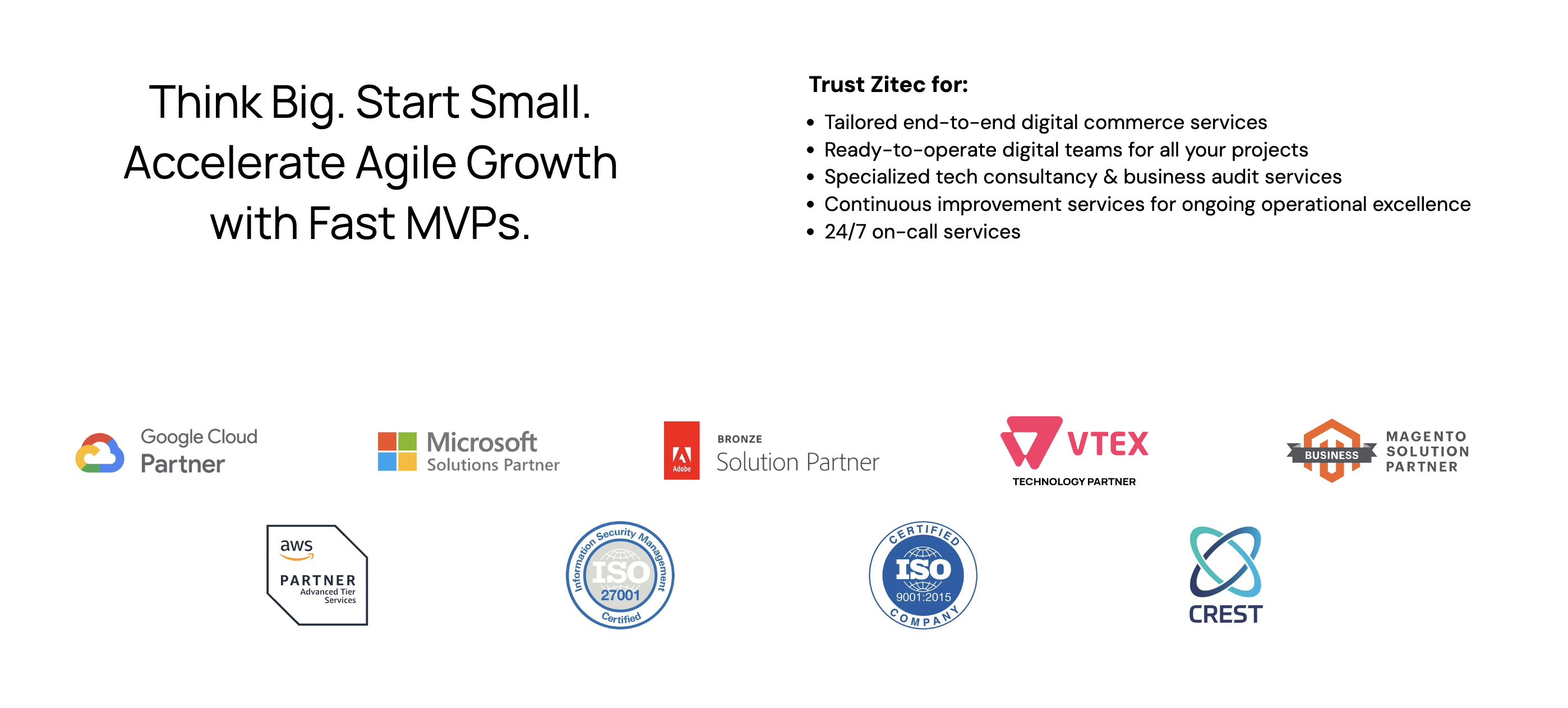
The fail-fast mindset — a philosophy that encourages rapid testing and learning rather than investing years into massive, rigid projects, allows for quick and cost-effective learning.
A proper digital transformation initiative begins with a Minimum Viable Product (MVP) or a Proof of Concept (PoC). This approach allows retailers to:
- Assess the potential impact of new technologies without committing to full-scale implementation.
- Mitigate risks associated with overextending resources or overspending.
- Make adjustments based on real-world data and customer feedback.
At Zitec, our approach focuses on delivering tangible results in a short timeframe. This allows businesses to experiment and iterate, ensuring they invest in solutions that truly align with their long-term goals.
Step 3 Invest in Key Areas of Retail Innovation
After establishing the MVP or PoC, it’s time to strategically invest in areas that offer the highest return and align with consumer expectations. Based on industry trends, the following are the key drivers of digital transformation in retail:
Step 4: Partner with Trusted Technology Experts
Choosing the right technology partner is crucial for a successful digital transformation. A partner who understands your retail business context and can deliver tailored solutions will significantly reduce risks like cost overruns and missed deadlines.
While 59% of retail CIOs struggle to deliver projects on time and on target, our approach is slightly different, resulting in a 90% successful delivery rate.
|
How so? We provide a collaborative governance framework, allowing businesses full visibility into project progress and allowing them to make informed decisions about resource allocation for full transparency, collaboration, and trust.
Here are some key factors to look for in a technology partner:
- Experience in your specific industry or sector
- Proven track record of delivering projects on time and on target
- Ability to scale solutions and adapt them to your evolving business needs
Step 5: Measure and Iterate for Continuous Improvement
Digital transformation is not a one-time project, but an ongoing process. After rolling out your MVP or initial implementation, continuously measure performance and iterate as needed. Retailers should use data-driven insights to:
- Refine their digital strategies.
- Improve the customer experience.
- Adapt to new market trends and consumer behaviors.
The Future of Innovation in Retail
So, what’s the future looking like for retailers? At least two key innovations are already reshaping the future of retail and will continue to do so:
1. Artificial Intelligence and Machine Learning
AI and ML have many use cases in retail, as they’re at the forefront of retail digital transformation. These technologies are used for personalized customer experiences, demand forecasting, and even fraud detection.
In retail and supply chain, artificial intelligence technologies analyze data from multiple touchpoints to help optimize inventory management, predict trends, and enhance the customer shopping experience. Think of dynamic pricing strategies and personalized marketing campaigns, all working to drive deeper engagement and loyalty across all in-store sales and digital channels.
But it doesn’t stop here. As artificial intelligence and ML evolve, they become savvier, so expect even more breakthrough discoveries and use cases of these technologies.
2. IoT and Smart Stores
The Internet of Things (IoT) is redefining in-store experiences. Smart shelves, sensors, and IoT-powered devices provide real-time data analytics on inventory levels and customer behavior. For example, IoT sensors can monitor foot traffic and product interaction, allowing retailers to optimize store layouts and improve stock management.
Smart stores use IoT to offer customers a blend of digital and physical experiences, such as:
- Real-time stock updates for both online and in-store purchases.
- Connected shopping experiences, like smart mirrors and interactive kiosks.
- Automated checkout processes that use IoT sensors to scan and bill products directly from the cart.
Do such investments always pay off? Certainly not, as shown even by large retailers like Amazon. Hence, assessing all potential scenarios and contingency planning is essential, as is identifying the level of market readiness to adopt new and improved ways of shopping.
Next Steps in Driving Digital Transformation for Businesses
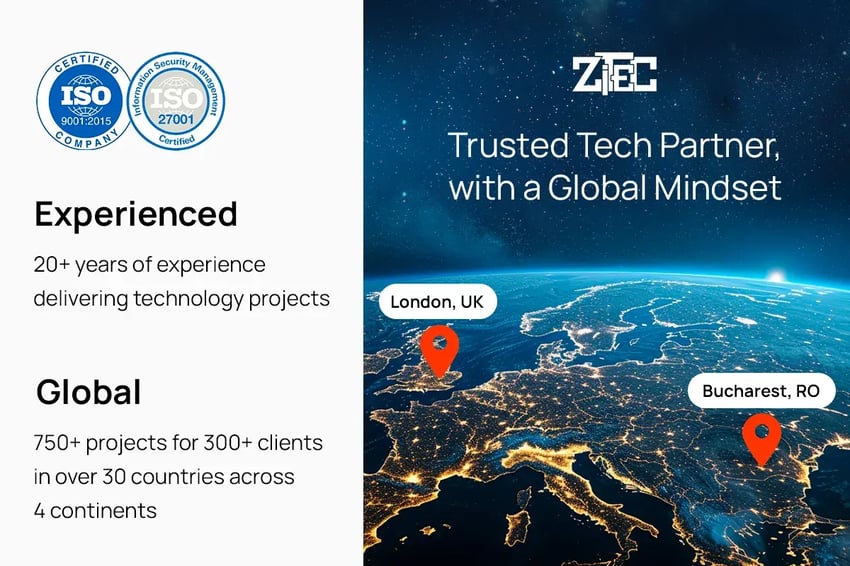
Digital transformation in retail is no longer a question of "if", but "when" and "how." The imperative to drive better customer experiences, increase retention, and boost loyalty is as present as ever. This is a time to capture demand and retain it for long-term growth, as new technologies are paving the way for new ways of doing business.
The shift in customer expectations shows it, and retail market leaders worldwide are taking notice. Organizations must adopt change from top to bottom to deliver based on these evolving demands.
The only way to instill a smooth and effective transition is to follow a strategic approach and initiate change from within, starting from the organizational mindset and culture. After assessing business needs, it’s time to validate ideas via MVPs or PoCs in controlled environments.
We’re here to help. With a track record of delivering 90% of projects on time and on budget compared to an industry average of just 33%, we’re here to ensure your retail digital transformation journey is as smooth and rewarding as possible.



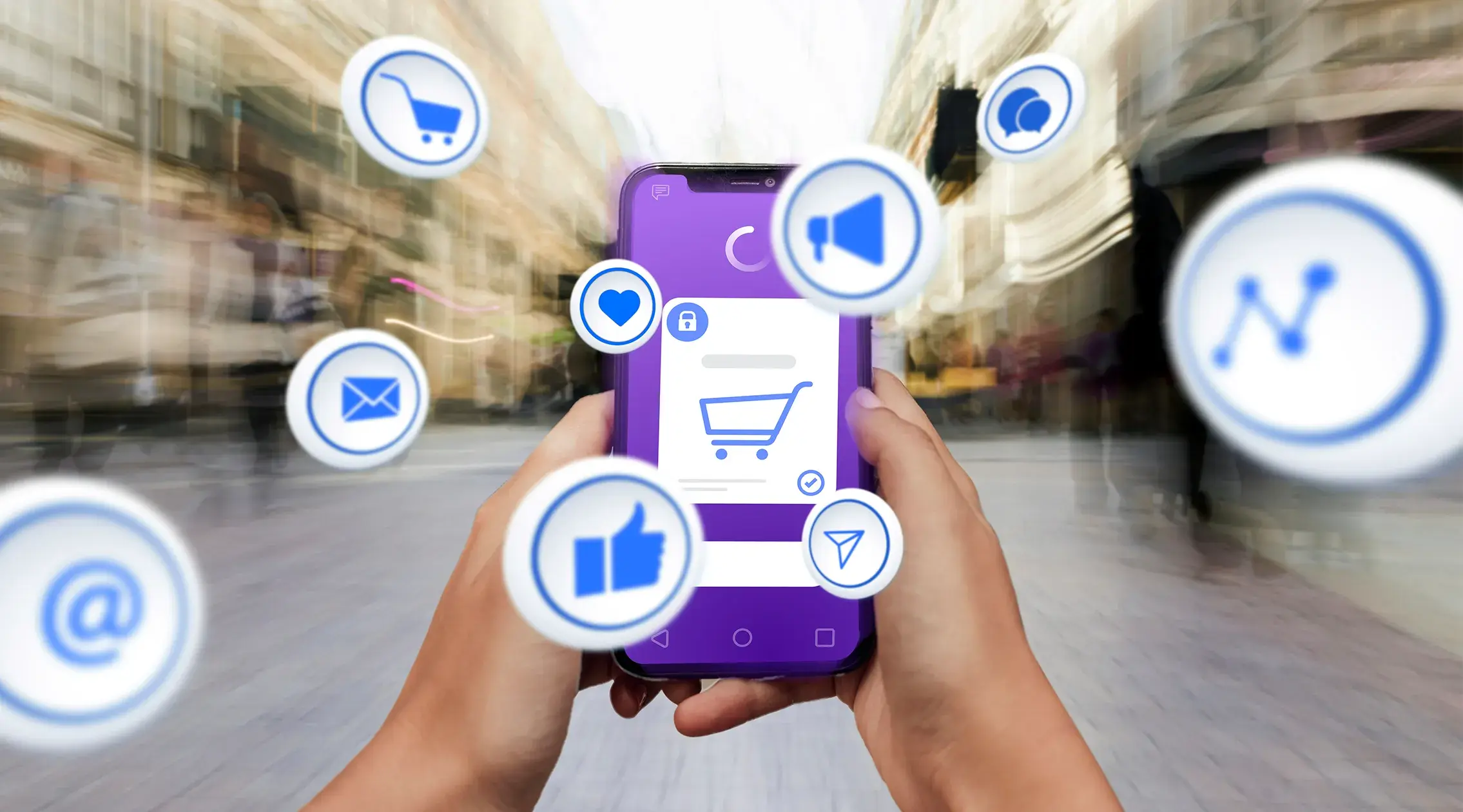




.jpg?width=1200&height=800&name=unnamed%20(1).jpg)







